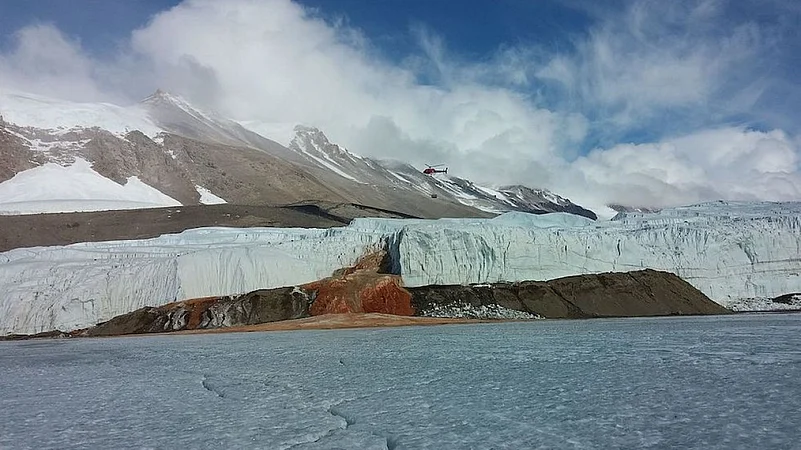The earth is a mysterious place with various phenomena taking place. And while some mysteries solve themselves, there are still some that remain unresolved and have piqued the interest of travellers and scientists alike. One such mystery is that of the Blood Falls in Antarctica which remained unsolved for a long duration. While Antarctica is known for its pristine white snow cover, there is a part that stands out for its blood-red colour. Known as the Blood Falls, this unique phenomenon was first discovered by scientists as a frozen waterfall in 1911. Scientists had noticed that a part of the cliff had been stained dark red and the reason was unknown. They then believed that the discolouring of water was due to the presence of algae. However, there was no proof to verify the same.

The Blood Falls are not only unusual in terms of their colour but also grab attention because it is the coldest glacier on earth and supports constantly flowing water filled with iron. The falls remained a mystery for the longest time since one can see spot the glacier melting at the surface of the cliff, despite the average temperatures being -17 degrees celsius.
The waterfall flows out of the Taylor Glacier in Antarctica's McMurdo Dry Valleys and had continued to grab everyone’s attention for its unique colour, until a few years ago. However, after much research, the reason behind the blood-red colour of the falls was discovered.
About two million years ago, the Taylor Glacier had managed to seal beneath it a small body of water, which is also home to an ancient community of microbes. These microbes remain trapped under a thick layer of ice to date, isolated from their surroundings. Existing and evolving under conditions that have no contact with the outside world, these microbes barely see any light or oxygen and almost no heat.
The trapped lake is highly saline and rich in iron, and when it reacts with the oxygen outside, the waterfall gets its unique red colour. Essentially, it is the same phenomenon that lends iron its dark colour when it rusts.
Underneath the glacier lies a complex network of subglacial rivers as well as a subglacial lake, which are all rich in iron. The lake under the glacier is also unusually salty, and since salt water has a lower freezing point, and releases heat while freezing it melts the ice and hence the river on it flows. As one moves closer to the falls, the content of salt also increases.
This subglacial lake flows out by means of a fissure in the glacier and thereby forming the falls without disrupting or contaminating the ecosystem within. According to researchers this salty water also takes nearly 1.5 million years to finally reach Blood Falls owing to its path being fissures and channels in the glacier.
The technology used to decode this mystery involved transecting the glacier in a grid using radio-echo sounding to understand the features below the glacier. A radar to scan the ice from which the river pours was used to uncover the mystery of the falls. These subglacial environments are also found on other planets, posing the question if life is indeed possible there too.
One can access the Dry Valleys only via a helicopter from the US and New Zealand or a cruise ship in the Ross Sea.


























